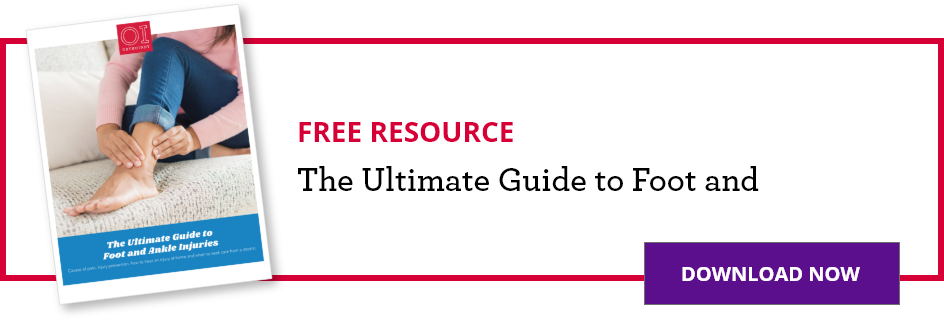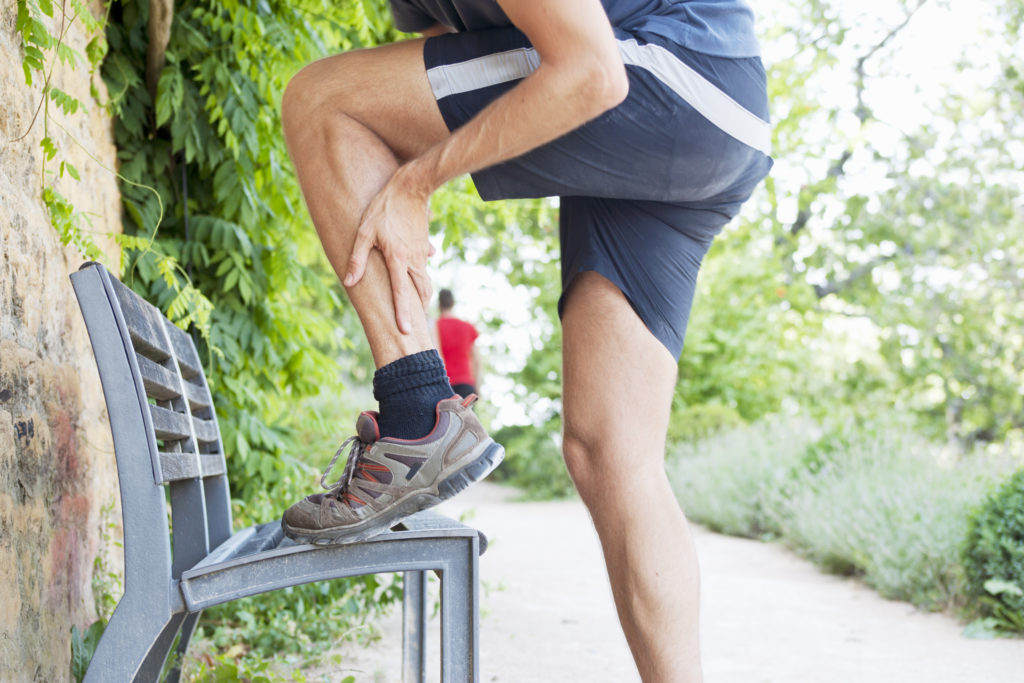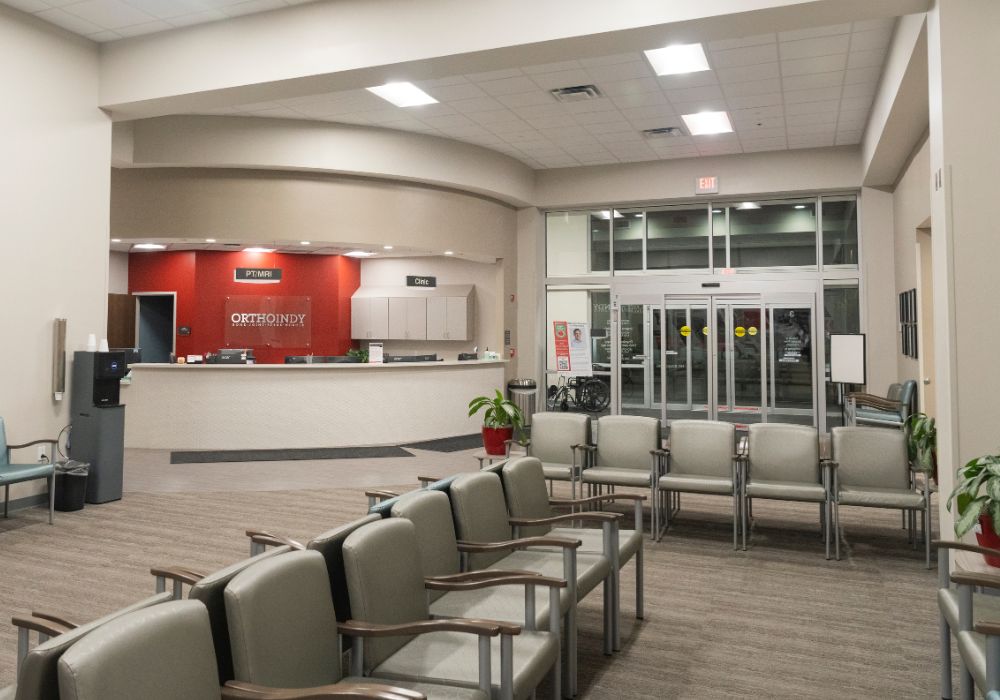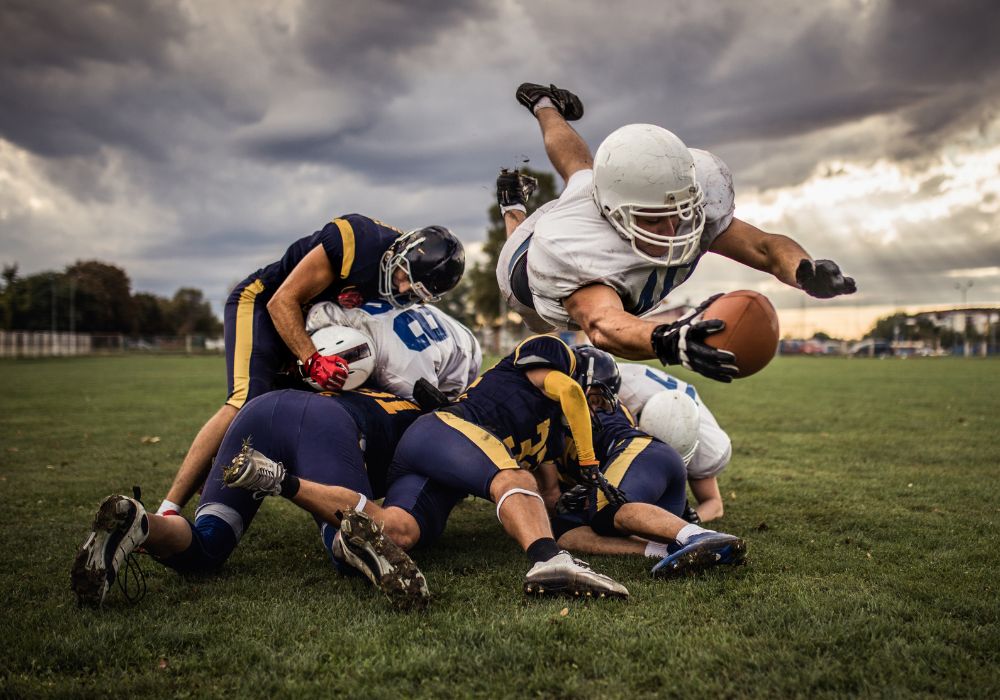THIS POST IS PART OF THE ULTIMATE GUIDE TO SPORTS MEDICINE AND THE ULTIMATE GUIDE TO FOOT AND ANKLE INJURIES
Achilles tendinitis causes pain along the back of the leg near the heel. The Achilles tendon is the largest tendon in the body and it connects the calf muscles to your heel bone. Anytime you walk, run or jump, the Achilles tendon is used and can withstand great stress. However, due to overuse and degeneration, it is prone to tendinitis.
Anatomy
Tendinitis is inflammation of a tendon. Inflammation is the body’s natural response to injury or disease. There are two types of Achilles tendinitis, depending on which part of the tendon is inflamed.
- Noninsertional: fibers in the middle portion of the tendon start to break down with tiny tears, swell and thicken. This tendinitis commonly affects younger, active people.
- Insertional: involves the lower portion of the heel, where the tendon attaches to the heel bone.
What causes Achilles tendonitis?
Achilles tendonitis is not related to a specific injury and can occur at any time, even in patients who are not active. It’s often the result of repetitive stress to the tendon. Sudden increase in the amount or intensity of exercise, tight calf muscles or bone spurs can aid in the likelihood of someone developing tendinitis.

What are the symptoms of Achilles tendinitis?
- Pain and stiffness along the Achilles tendon in the morning
- Pain along the tendon or back of the heel that worsens with activity
- Severe pain the day after exercising
- Thickening of the tendon
- Bone spurs
- Swelling that is present all the time and gets worse with activity.
How is Achilles tendonitis diagnosed?
Your physician will ask you for a complete medical history, have you describe your symptoms and conduct a physical examination. An X-ray or MRI may be necessary to rule out other problems.
OrthoIndy is proud to be the official orthopedic provider of the Indiana Pacers. Make an appointment with a foot and ankle specialist at OrthoIndy.
How is Achilles tendonitis treated?
The majority of cases can be treated without surgery. However, even with early treatment, it may take three to six months for pain to completely subside.
Nonsurgical treatment options:
- Rest
- Ice
- Anti-inflammatory medications
- Physical therapy
- Immobilization
- Calf stretching exercises
Surgery may be recommended by your physician if pain does not improve after six months of nonsurgical treatment. Your orthopedic physician will determine the best surgery options for you.
Schedule an appointment with an OrthoIndy foot and ankle physician
Surgical options
Surgery is dependent on the location of the tendinitis. Noninsertional tendinitis is more likely to respond to nonsurgical treatment. In cases where pain does not resolve, surgical treatment usually includes debridement and repair of the involved tendon; sometimes accompanying a tendon transfer.
For insertional Achilles tendinitis, surgical treatment typically involves debridement of the involved tendon as well as its insertion, with possible reattachment of the tendon.
How do you recover from Achilles tendonitis?
After surgery, it is important to keep weight off your tendon for several weeks to allow for recovery. It usually takes 6 to 12 months for complete recovery after surgery.
Learn more about foot and ankle treatment at OrthoIndy.
Schedule an appointment
Your well-being is important to us. Click the button below or call us to schedule an appointment with one of our orthopedic specialists. If your injury or condition is recent, you can walk right into one of our OrthoIndy Urgent Care locations for immediate care. For rehabilitation and physical therapy, no referral is needed to see one of our physical therapists.





